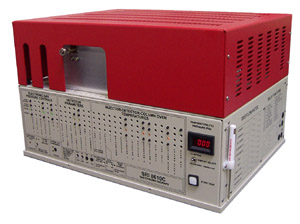
CHM3120L
Introduction to Analytical Chemistry: Laboratory
| Lab Schedule |
| LON-CAPA Pre-Labs |
| Resources |
| Contact Instructor |
| Chemistry Home Page |
![]()
Quantitative Analysis of Hydrocarbons by Gas Chromatography: Introduction
Gas-liquid chromatography (GLC) accomplishes a separation by partitioning solutes between a mobile gas phase and a stationary liquid held on a solid support. A sample is injected into a column. The solutes are absorbed at the column inlet by the stationary phase and then desorbed by fresh carrier gas. This sorption-desorption process occurs repeatedly as the sample is moved through the column toward the outlet by the carrier gas (mobile phase). Each solute will move at its own characteristic rate, and the individual bands separate to a degree that is determined by the relative strengths of the sorption-desorption partitioning. Non-sorption phenomena such as eddy and molecular diffusion tend to broaden the individual solute bands and reduce separation efficiency, and a main task of chromatographers is always minimizing peak broadening.
Signals from a detector located at the column outlet appear as a plot of detector response (counts) vs. time. The time at which a peak appears is characteristic for the component making up the peak; the peak area, and usually peak height as well, are proportional to the concentration of the component.
GLC is limited to volatile compounds that can be vaporized below about 400°C without decomposing. About 15% of all organic compounds fall within this classification; a much smaller number of inorganic compounds have the appropriate physical properties for GLC analysis.
In this exercise you will measure some properties of a GLC system and use it for both identification and determination of some hydrocarbons in a mixture.
Gas Chromatography Animation